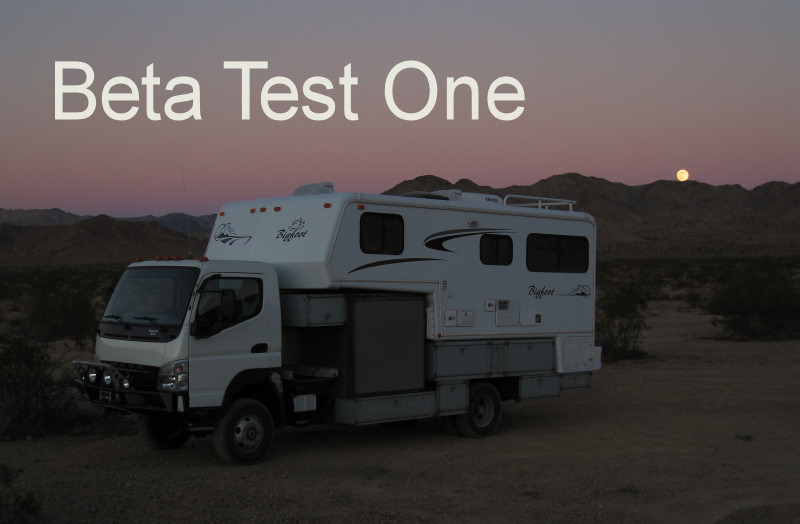dhackney said:
I'd like to close our knowledge gap on roll angle, which is a pretty easy test on a sailboat but very "expensive" with a truck of this size unless we can find a tilt table that can accomodate its dimensions & weight. Untill then we'll be operating with only our "pucker factor" as gauges, and my wife's kicks in at about 2.327 degrees.
Turns out that you can measure the height of the center of gravity pretty much the same way you can on a sailboat. Weigh it level and then tilt it and weigh it again.
All you need is a truck scale and a couple ramps like people use for oil changes to create the tilt. But in this case all you have to do is raise the front wheels a little bit.
Once you have the height of the center of gravity and the track you can quickly calculate the the theoretical maximum side angle.
here's the web site detailing the procedure and calculations:
HTML:
http://www.jeepaholics.com/tech/cog/
All his explanations aren't text book perfect but the science is right.
Fuso used to sell a nice dash mounted tilt gauge that helps prevent arguments between driver and navigator.
The Fuso body builder manual states you should keep the cog height under 59 -60 inches above the ground. I thought it was 60 for the FE and 59 for the FG, but I can't find the 59" reference anymore.
The chassis only cog is 28 inches, just below the frame rails which is theoretically good enough for driving across a 100% percent grade ( a 45 degree slope). About the same as a Hummer H1.
Then there's traction, bumps, holes and dynamic movement and the weight of whatever structure you add that detracts from that ability.
It sounds like you added about 10,000 punds to the bare chassis. Some of that weight is at or below 28" so that's good. Some of it's above 28". The question is how much weight and how far above 28".
I think that worst case, if the cog of the 10,000 pounds of payload you added was less than 78 inches above the ground you would be within in fuso's 60 inch guideline.
I think that would be a theoretical maximum side angle of 28 degrees. That's static - the dynamics of a vehicle going over bumps and down into holes and springs compressing would make it risky to approach that angle.
It's unlikely that your cog is that high, but if it is, the worst offenders are the roof rack and anything you stow there (very high), the generator (high and heavy, the motorcycles (high and heavy), the roof mounted air conditioners and the 3rd and 4th house battery.
It's obvious that you should load your heaviest gear in the lowest tool boxes, but it's not obvious that you shoul load the vehicle evenly side to side. If you don't the cog will shift closer to the heavy side and your side angle capability will be less on the heavy side.
That's why I dob't like inter connected fuel tanks. The weight will slosh to the low side.
It would make sense to determine the cog from a safety point of view as well as peace of mind and to answer those naysayers you will meet along the way who will tell it must be top heavy because it "looks" top heavy.
good luck on the journey.
Tom


